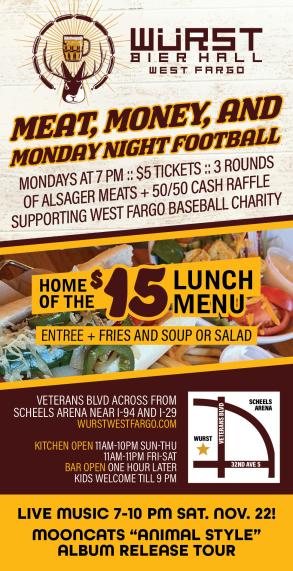
Communication analysis course reaps many findings for writers and readers
In my collegiate quest to become a journalist, my major’s curriculum guide plopped me in COMM 320: Communication Analysis last fall, a charming class devoted to communication research and analyzing media and messages.
A term paper project dominated the semester, with mixed methods research, content analysis and qualitative and quantitative information-gathering approaches all playing roles in answering the problems we set out to solve in our term papers’ media research.
As a devotee of the HPR, I selected the High Plains Reader for my term paper, and ventured forth to study alternative newspapers in the U.S. via a longitudinal study and content analysis of the HPR.
With 50 issues from five volumes across 18 years (1996 to 2014), I coded every story and advertisement found therein for 11 different content categories to learn all about alternatives, using the HPR as a case study. Here’s a rundown of what my research found, for you, the munificent reader:
- 49 percent of all stories were opinion-driven, from the page 3 editorial to letters to the editor to The Gadfly column
- 2.3 percent of all stories were hard news
- 59.16 percent of all stories were arts and entertainment-related (visual art, theater, food and drink, film, music, etc.)
- Film has been the most covered subject in the High Plains Reader, comprising 14.93 percent of stories. This may be due in part to the large number of film stories that ran in 1996 pertaining to the movie “Fargo,” which was covered extensively in the HPR, as well as two film writers who have written prolifically for the newspaper in the last two decades
- Music was the second most covered subject, at 14.25 percent of all stories
- The least covered subjects were fashion and travel
- The only content to appear in all issues of the High Plains Reader were the Best Bets guide, the back pages event calendar, the page 3 editorial and Jacobs’s film column
- There were 2.6 advertisements for every article in the High Plains Reader
- Local businesses were the most prolific advertisers in the HPR, followed by eateries
- International companies, military and the government were those who advertised the least often in the HPR
- Music was the most advertised subject in the HPR, at 26.67 percent, followed by food and drink at 17.64 percent
- The most common types of stories were opinions, then event coverage
- Over 2,600 stories and advertisements appeared in 50 issues of the High Plains Reader from volumes in 1996, 1999, 2004, 2009 and 2014. All of these were analyzed for this study.


_(1)_(1)_(1)__293px-wide.jpg)
_(1)__293px-wide.jpg)

__293px-wide.jpg)
_(1)__293px-wide.png)